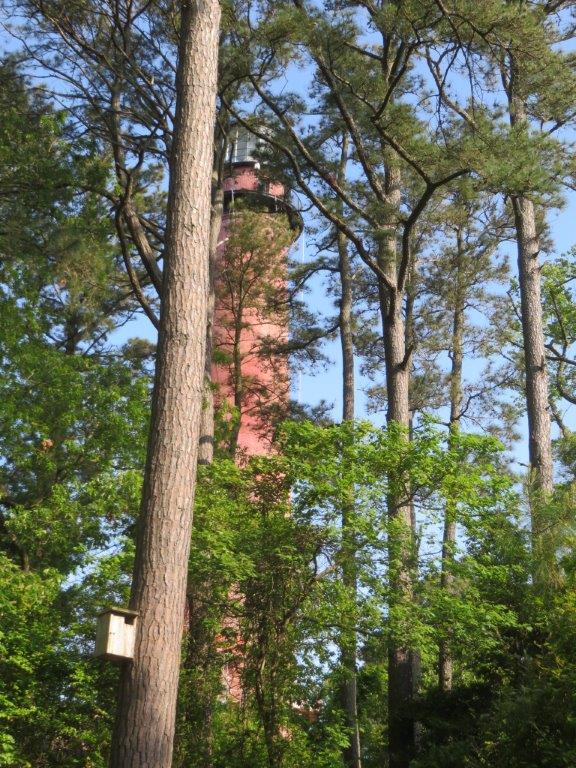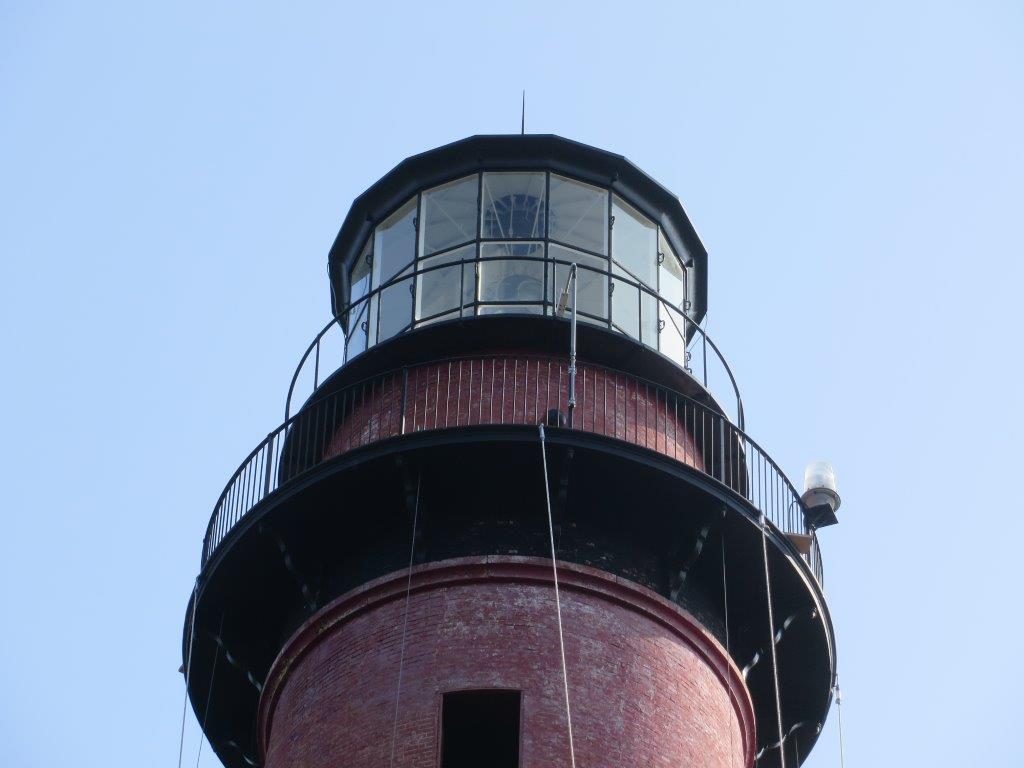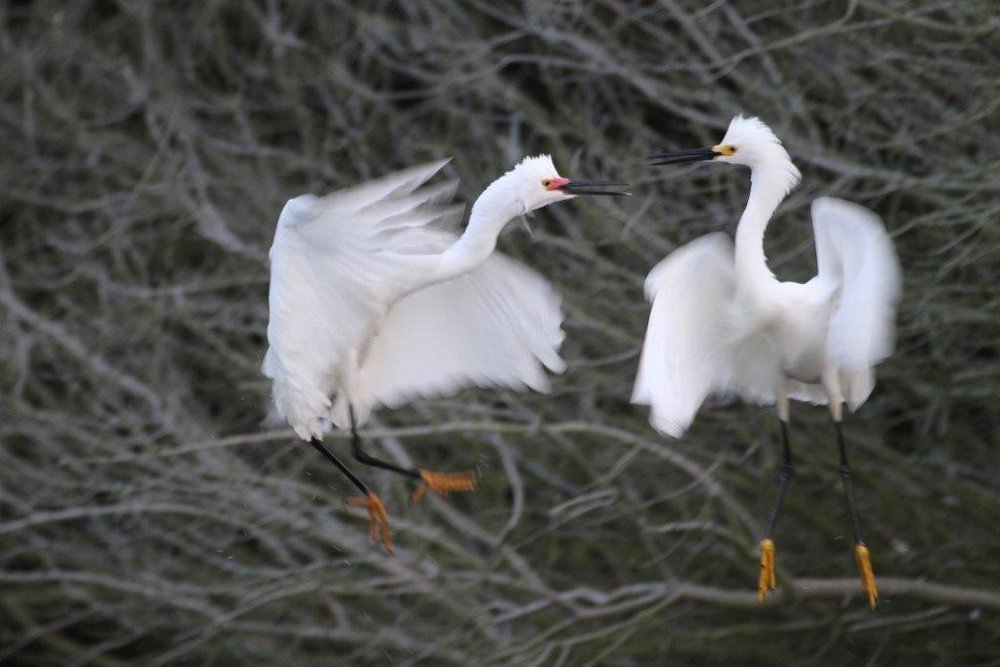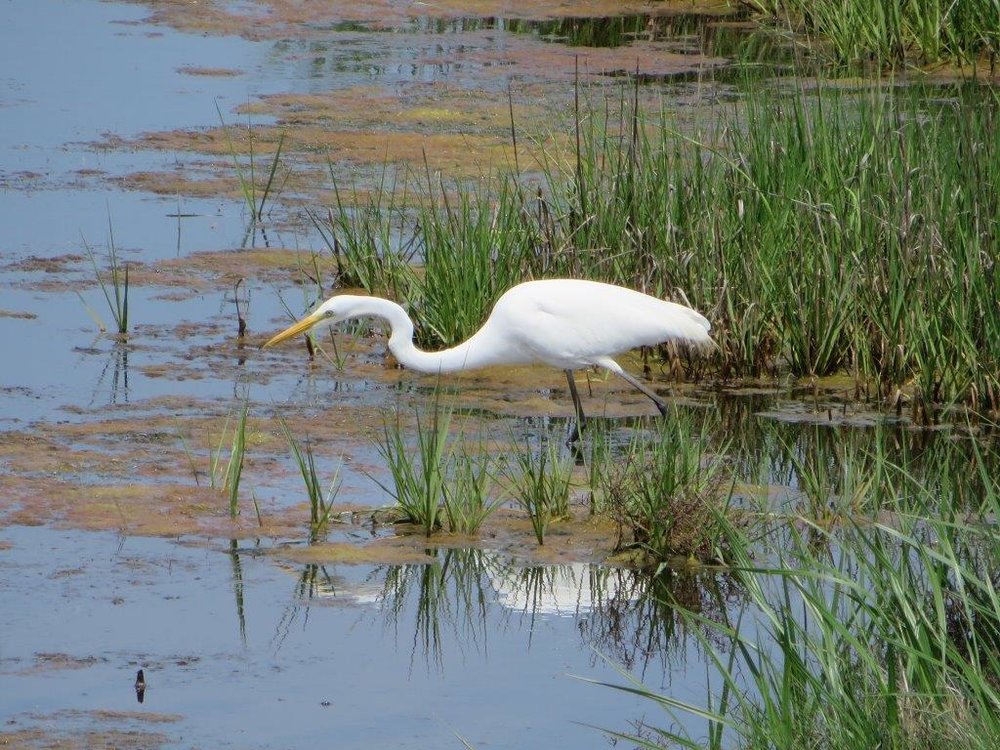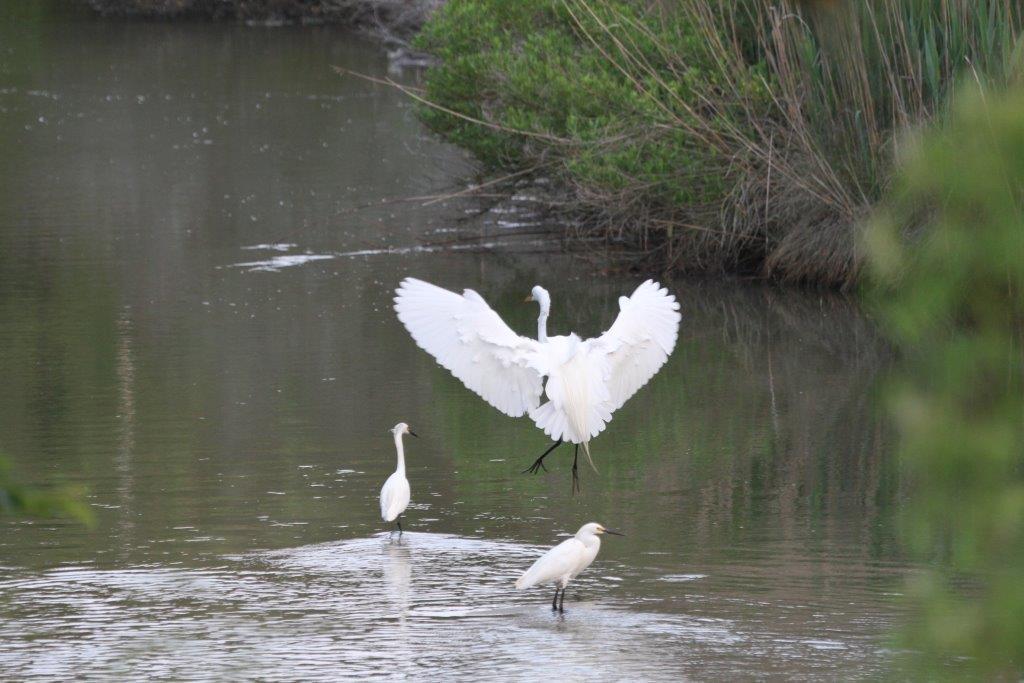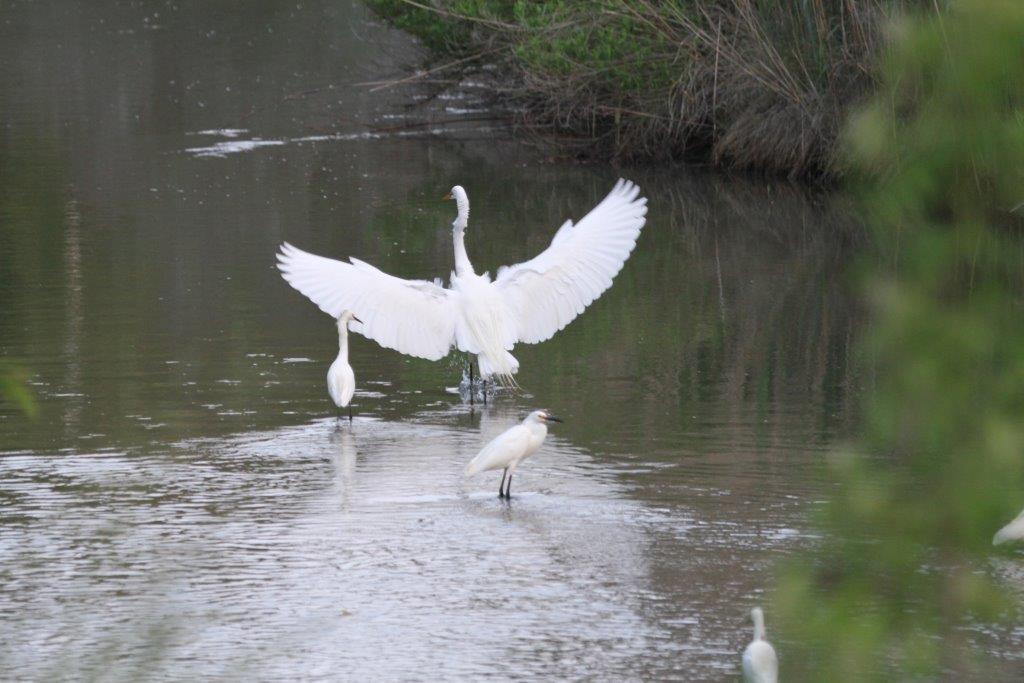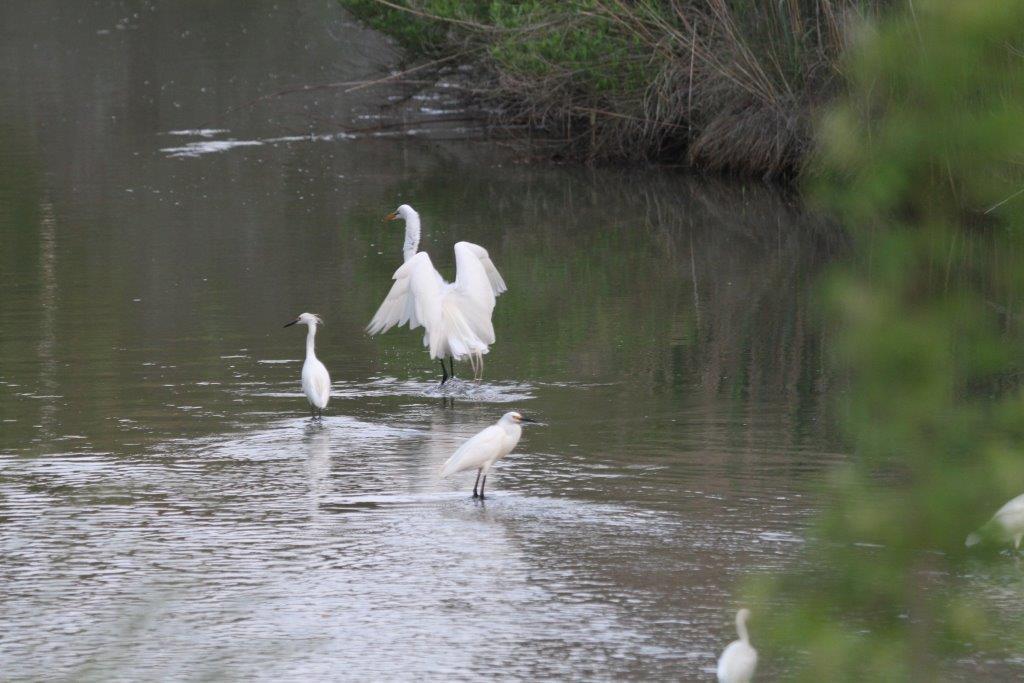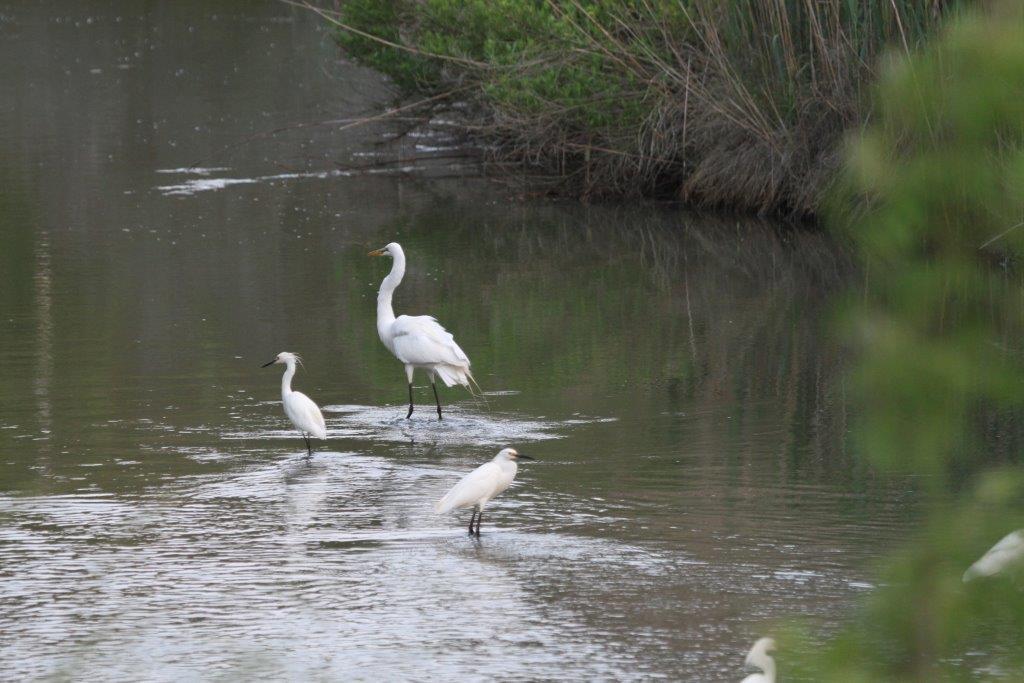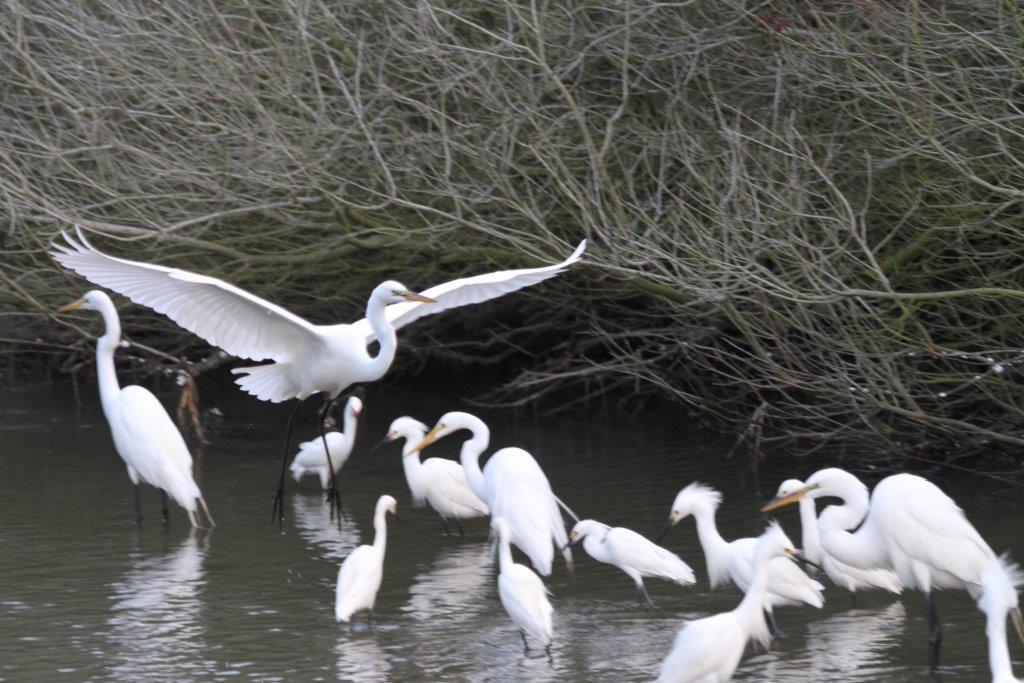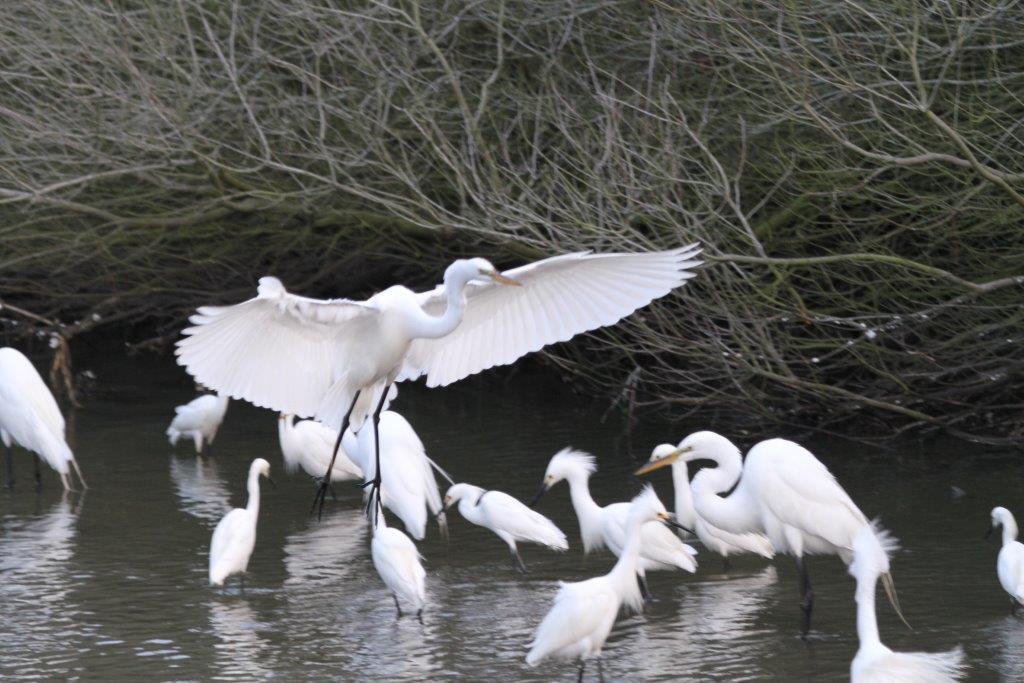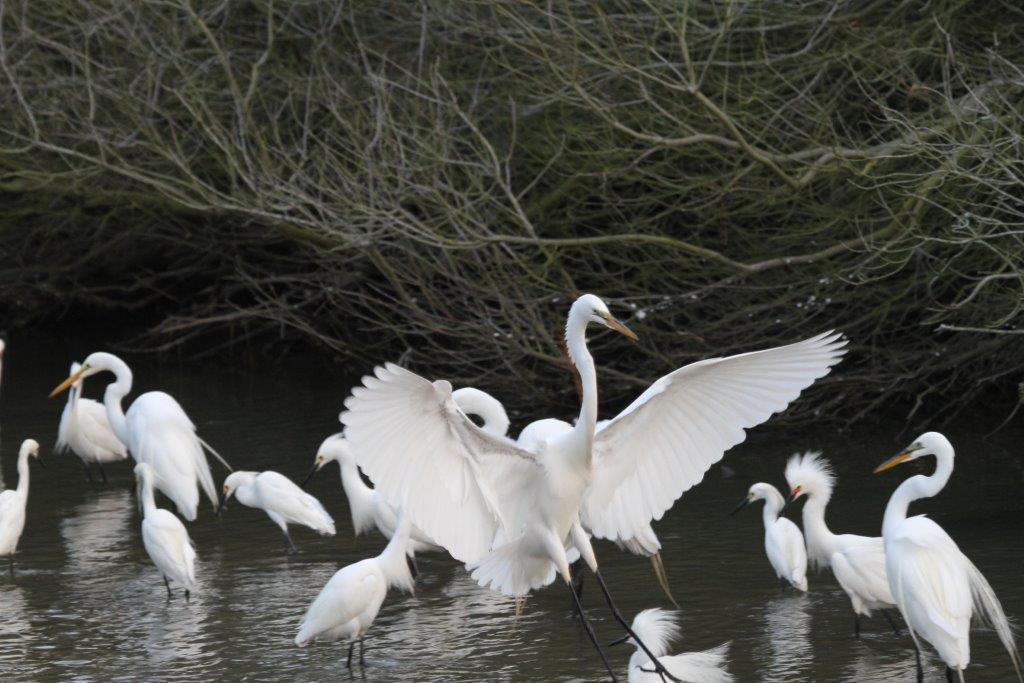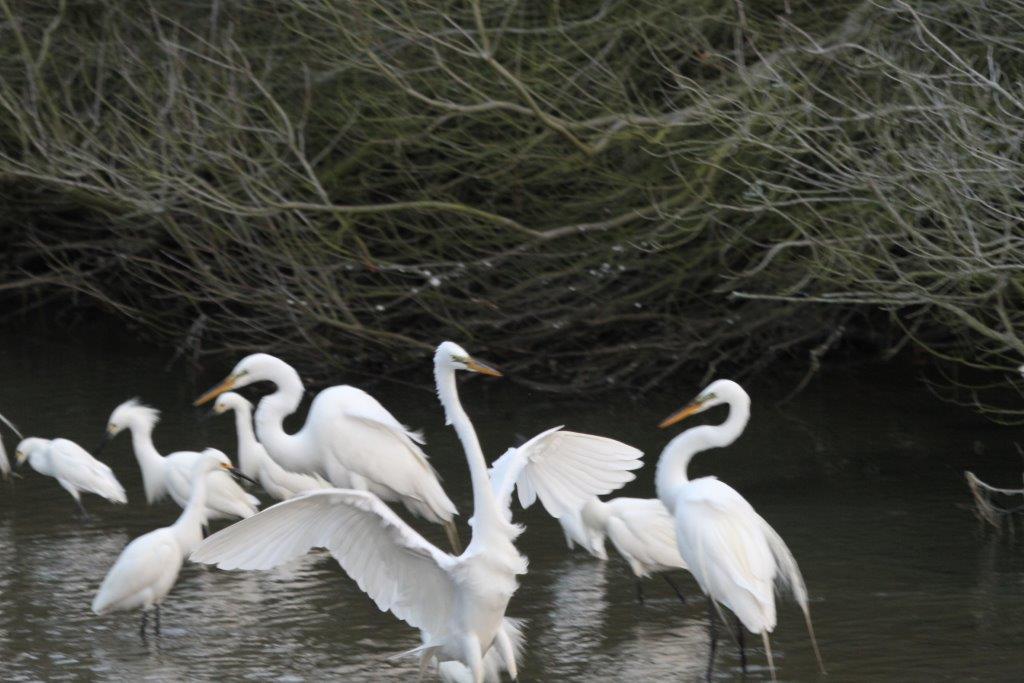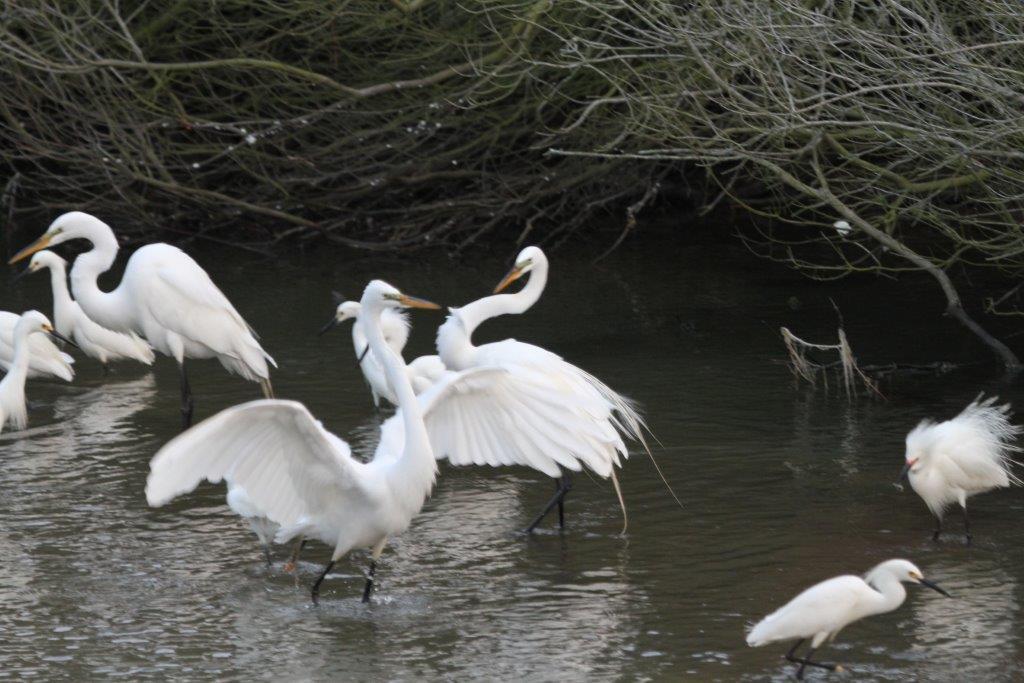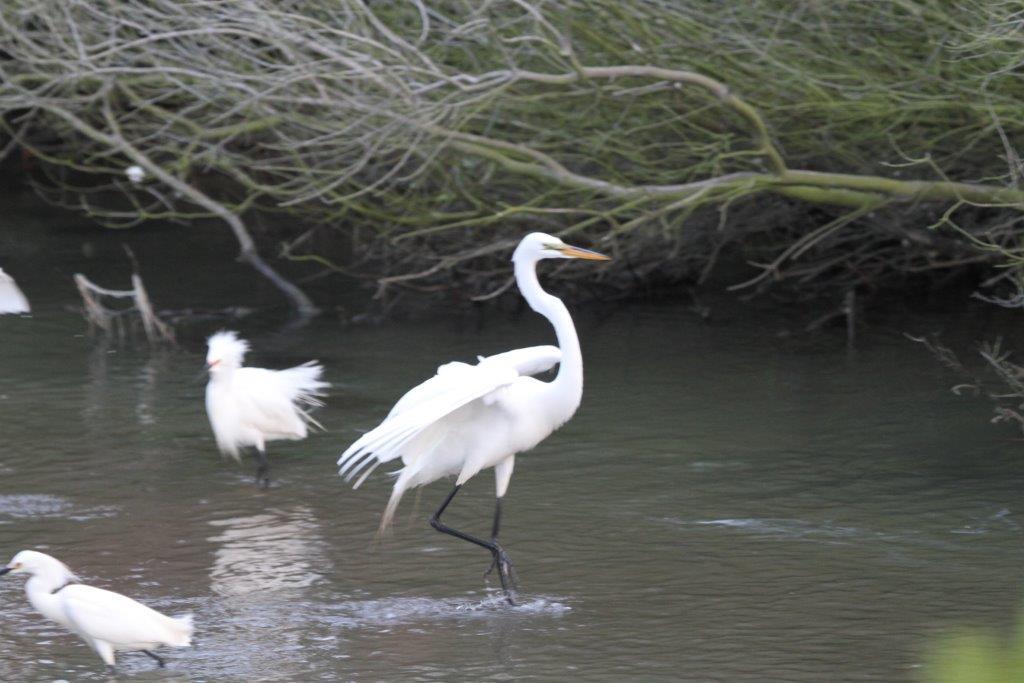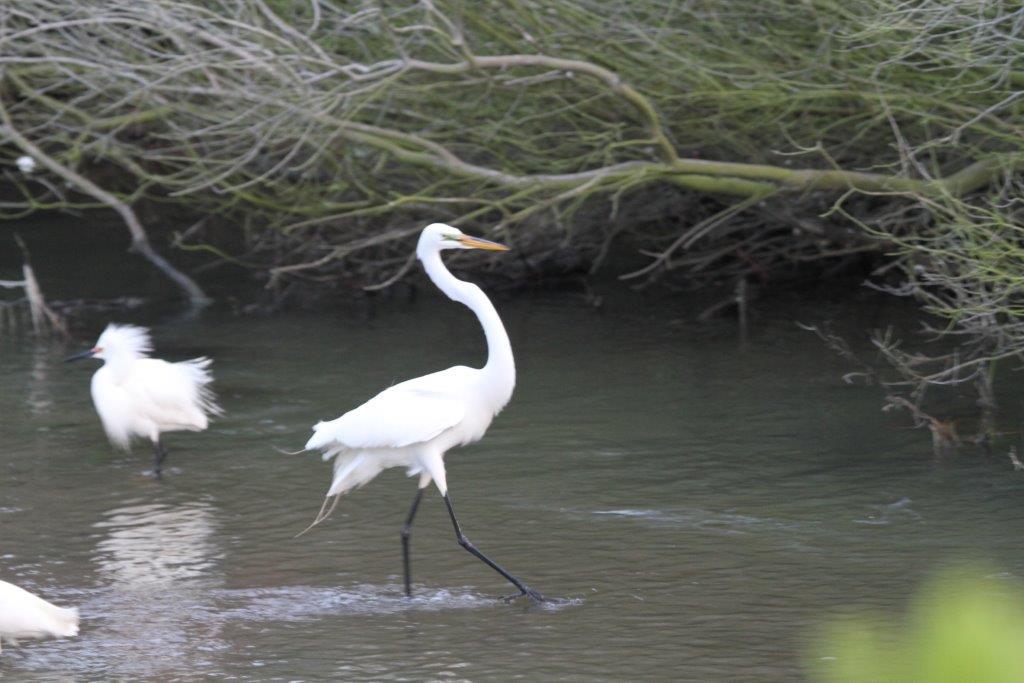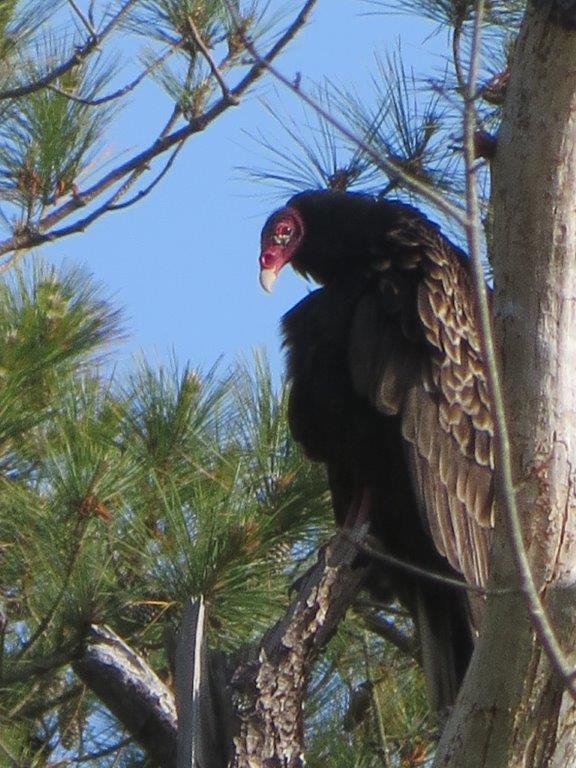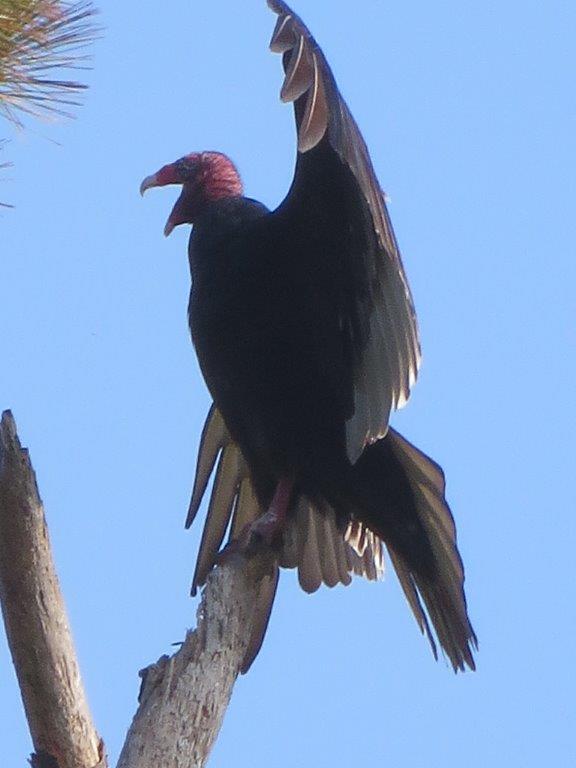Chincoteague National Wildlife Refuge
/
I’ve posted already about the vultures and egrets at Chincoteague National Wildlife Refuge and the sunset/sunrise at the Assateague Island National Seashore. This post is a collection of other aspects of the place that I photographed on our visit in May.
There were ducklings that suddenly appeared from behind a clump of grass with the momma and proceeded to bathe in the water. Some of the ripples in the picture above are actually more ducklings that have temporarily submerged! Hours later it occurred to me that it would have been an excellent time to try testing out the video function in my camera.
There is a new visitor center at the refuge. The skylights are on top of chimney like structures. They provide light to the inside but not direct sunlight. Good design.
Does everyone that goes to the beach take at least one bird picture like this one to the left?
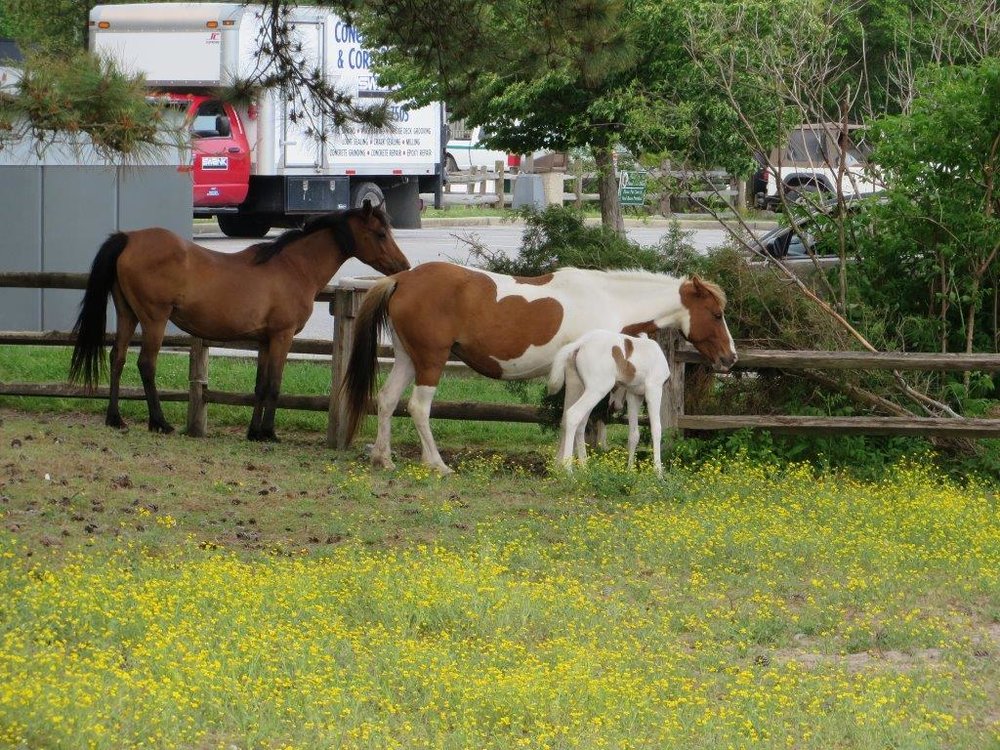
We didn’t seen any of the famous Chincoteague ponies in the refuge but there were two mares with colts in the corral next to our inn that were available for adoption. These ponies did not seem as scruffy as I remembered from previous visits when we had seen them in the marsh.
The light house was being renovated but we walked around to see it through the trees. I managed to use the zoom to take a close up of the top with the cables attached to support the renovation work.
On the way back to the car from the lighthouse - trying to walk faster than the mosquitoes and midges - I managed to notice and photograph a frog beside the path. It seems like 9:00 AM was the wake up time for the insects and nothing deterred them!



